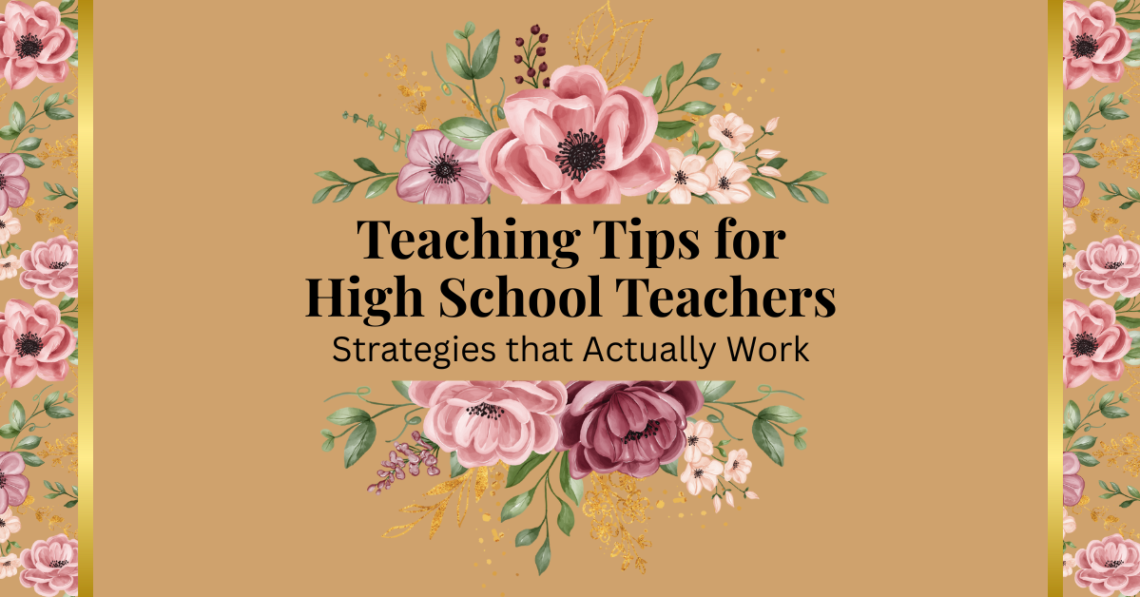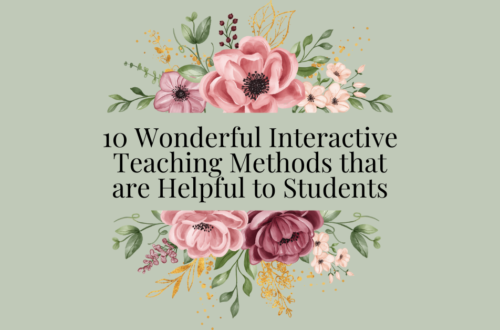High school teaching can be one of the most rewarding and, at the same time, one of the most challenging careers. You’re working with students at a unique stage of life. They are developing independence, thinking critically, preparing for college or careers, and often balancing academics with extracurricular activities, jobs, and personal struggles. Because of this, effective teaching requires both skill and adaptability.
If you’ve been searching for practical teaching tips for high school classrooms, you’re in the right place. This post will dive into strategies that not only help you manage your classroom but also foster meaningful learning experiences for your students. Whether you’re a first-year teacher or a seasoned veteran, these high school teaching tips will help you engage your students, improve instruction, and create a classroom where students thrive.
Why High School Teaching Is Unique
Before we get into specific teaching tips, it’s important to recognize why high school teaching is different from elementary or middle school.
- Student independence: High school students are capable of handling more responsibility but still need guidance.
- Curriculum rigor: The content is often more complex, requiring higher-order thinking.
- Adolescence: Students are navigating identity, friendships, and often stressful life situations.
- Preparation for the future: Teachers play a vital role in helping students prepare for college, trade schools, the workforce, and life beyond.
This means teaching tips for high school classrooms must balance academics with social-emotional support, discipline with encouragement, and structure with flexibility.
Teaching Tip #1: Build Strong Relationships First
One of the most overlooked but critical teaching tips for high school teachers is to prioritize relationships. Students won’t learn well from someone they don’t feel respects or cares for them.
Take time to learn your students’ names quickly. Ask about their interests, hobbies, and extracurricular activities. Show up to their games, performances, or competitions when you can—it means more than you realize.
A positive teacher-student relationship can motivate students to try harder, behave better, and engage more fully in class. It’s not about being their best friend; it’s about showing them that you are on their side and invested in their success.
Teaching Tip #2: Set Clear Expectations
High school students need structure. While they crave independence, they also thrive in environments where boundaries are clear. One of the most effective teaching tips is to establish your expectations on day one—and stay consistent.
Set norms for classroom behavior, homework policies, and participation. Post them visibly in your classroom, and revisit them often. Consistency is key. When expectations are clear, students feel more secure, and discipline issues often decrease.
Teaching Tip #3: Use Active Learning Strategies
One of the best teaching tips for high school teachers is to avoid making your classroom a lecture hall. While some lecturing is inevitable, you’ll find students learn more when they are actively engaged.
Try strategies like:
- Think-pair-share activities
- Small group discussions
- Role-playing or simulations
- Problem-based learning projects
- Socratic seminars
Active learning strategies increase participation, improve retention, and make learning more enjoyable for students.
Teaching Tip #4: Incorporate Technology Wisely
Today’s high school students are digital natives. While technology can be a powerful teaching tool, it must be used intentionally. One of the most practical teaching tips is to integrate technology in a way that enhances—not distracts from—learning.
Some ideas include:
- Online collaboration tools like Google Docs or Padlet
- Interactive quizzes on platforms like Kahoot or Quizizz
- Digital projects using Canva, video editing software, or coding platforms
- Learning management systems for organizing assignments and feedback
The key is balance. Technology should support the learning objectives, not just serve as a fun add-on.
Teaching Tip #5: Differentiate Instruction
No two high school students are the same. They come with different backgrounds, learning styles, strengths, and struggles. That’s why one of the most vital teaching tips is to differentiate instruction.
Differentiation might mean:
- Offering multiple ways for students to demonstrate learning (essays, projects, presentations).
- Adjusting assignments for struggling learners while still challenging advanced students.
- Using varied teaching methods—visual, auditory, and kinesthetic activities.
Differentiation ensures that every student has access to the material and the opportunity to succeed.
Teaching Tip #6: Make Learning Relevant
High school students are notorious for asking, “When am I ever going to use this?” One of the most powerful teaching tips is to make content relevant to their lives.
Connect your lessons to real-world situations. If you’re teaching math, show how it applies in sports statistics, budgeting, or engineering. If you’re teaching history, tie events to modern issues or debates. If you’re teaching literature, connect themes to challenges teens face today.
Relevance makes learning stick. When students see a purpose in what they’re learning, they are more motivated to engage.
Teaching Tip #7: Manage Your Classroom with Confidence
Classroom management is often one of the biggest struggles for high school teachers. One of the most practical teaching tips is to establish authority without being authoritarian.
Stay calm, consistent, and fair. Use non-verbal cues to redirect behavior when possible. Address issues privately instead of calling students out publicly unless necessary. And remember—relationships go hand in hand with management. Students are less likely to disrupt a classroom when they feel respected and valued.
Teaching Tip #8: Encourage Critical Thinking
High school is the time to move beyond memorization. One of the best teaching tips for this level is to challenge students to think critically. Ask open-ended questions. Encourage debate. Have students analyze, evaluate, and create rather than simply recall information.
This prepares them not only for standardized tests and college but for real life, where problem-solving and reasoning are essential skills.
Teaching Tip #9: Provide Timely and Meaningful Feedback
Feedback is essential for growth. One of the most important teaching tips is to give feedback that is specific, constructive, and timely. High school students can handle constructive criticism if it helps them improve.
Instead of just marking something wrong, explain why and provide examples of how to do it better. Celebrate progress, not just perfection. Students need to see that you recognize their efforts, not only their outcomes.
Teaching Tip #10: Take Care of Yourself
Perhaps one of the most overlooked teaching tips is this: you cannot pour from an empty cup. Teaching high school is demanding, and burnout is real. To be your best for your students, you must take care of yourself.
Set boundaries for grading and emails. Find a support system among your colleagues. Prioritize rest and self-care. When you are healthy—physically, mentally, and spiritually—you’ll be a better teacher for your students.
Why These Teaching Tips Matter
These teaching tips matter because high school is a pivotal time in students’ lives. They are making decisions that will shape their futures, and as their teacher, you have the opportunity to guide, influence, and inspire them. By building strong relationships, setting clear expectations, making learning relevant, and modeling resilience, you give your students more than knowledge—you give them the tools to succeed in life.
Conclusion
High school teaching isn’t easy, but it’s one of the most rewarding callings there is. These teaching tips can help you navigate the challenges and joys of the classroom with confidence. By focusing on relationships, engagement, differentiation, relevance, and self-care, you’ll create a classroom environment where students feel supported and inspired to learn.
Now I’d love to hear from you. Which of these teaching tips resonated with you the most? Do you have any strategies you’ve used in your own high school classroom that others could benefit from? Share your thoughts in the comments below—I’d love to start a conversation and learn from your experiences too.





